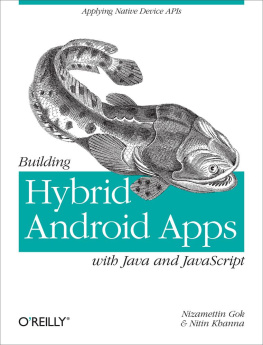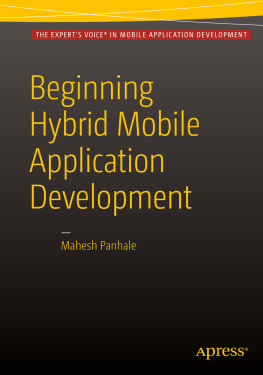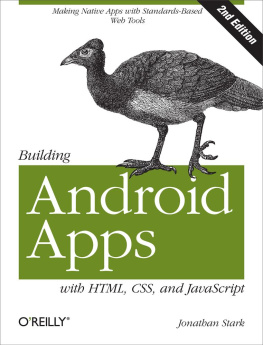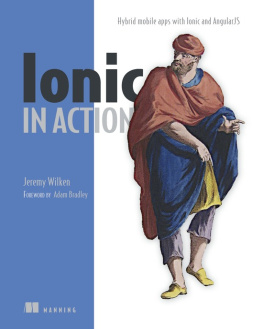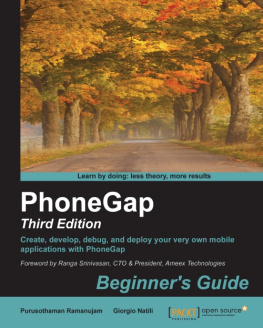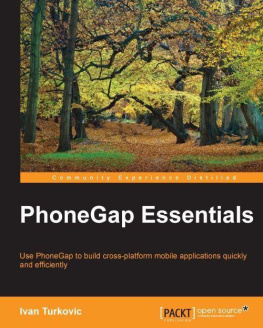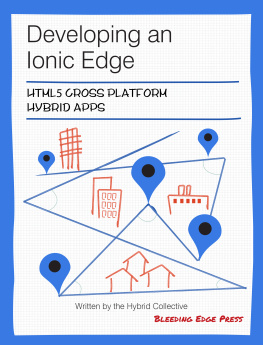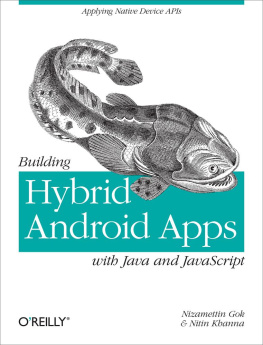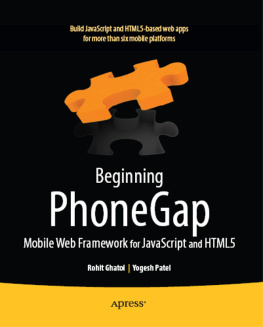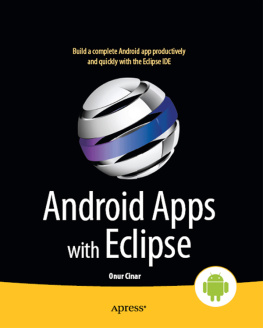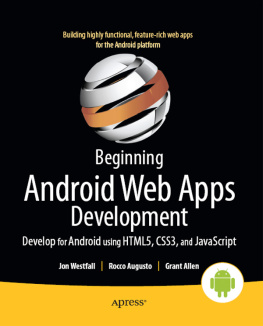Gok Nizamettin - Building hybrid Android apps with Java and JavaScript: applying native device APIs
Here you can read online Gok Nizamettin - Building hybrid Android apps with Java and JavaScript: applying native device APIs full text of the book (entire story) in english for free. Download pdf and epub, get meaning, cover and reviews about this ebook. City: Beijing, year: 2013, publisher: OReilly Media, genre: Computer. Description of the work, (preface) as well as reviews are available. Best literature library LitArk.com created for fans of good reading and offers a wide selection of genres:
Romance novel
Science fiction
Adventure
Detective
Science
History
Home and family
Prose
Art
Politics
Computer
Non-fiction
Religion
Business
Children
Humor
Choose a favorite category and find really read worthwhile books. Enjoy immersion in the world of imagination, feel the emotions of the characters or learn something new for yourself, make an fascinating discovery.
- Book:Building hybrid Android apps with Java and JavaScript: applying native device APIs
- Author:
- Publisher:OReilly Media
- Genre:
- Year:2013
- City:Beijing
- Rating:3 / 5
- Favourites:Add to favourites
- Your mark:
Building hybrid Android apps with Java and JavaScript: applying native device APIs: summary, description and annotation
We offer to read an annotation, description, summary or preface (depends on what the author of the book "Building hybrid Android apps with Java and JavaScript: applying native device APIs" wrote himself). If you haven't found the necessary information about the book — write in the comments, we will try to find it.
Build HTML5-based hybrid applications for Android with a mix of native Java and JavaScript components, without using third-party libraries and wrappers such as PhoneGap or Titanium. This concise, hands-on book takes you through the entire process, from setting up your development environment to deploying your product to an app store.
Learn how to create apps that have access to native APIs, such as location, vibrator, sensors, and the camera, using a JavaScript/Java bridgeand choose the language that gives you better performance for each task. If you have experience with HTML5 and JavaScript, youll quickly discover why hybrid app development is the wave of the future.
Gok Nizamettin: author's other books
Who wrote Building hybrid Android apps with Java and JavaScript: applying native device APIs? Find out the surname, the name of the author of the book and a list of all author's works by series.

